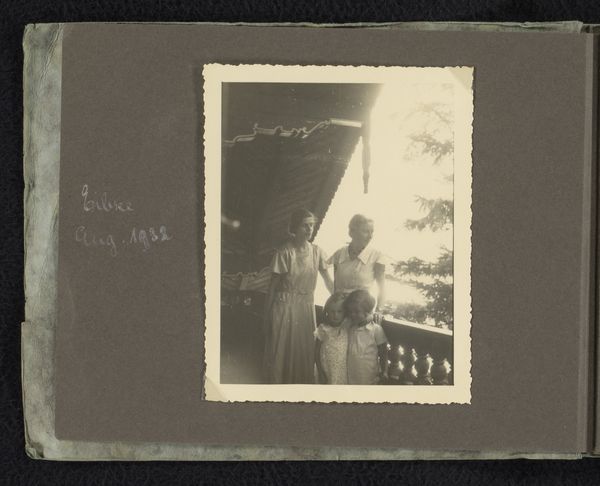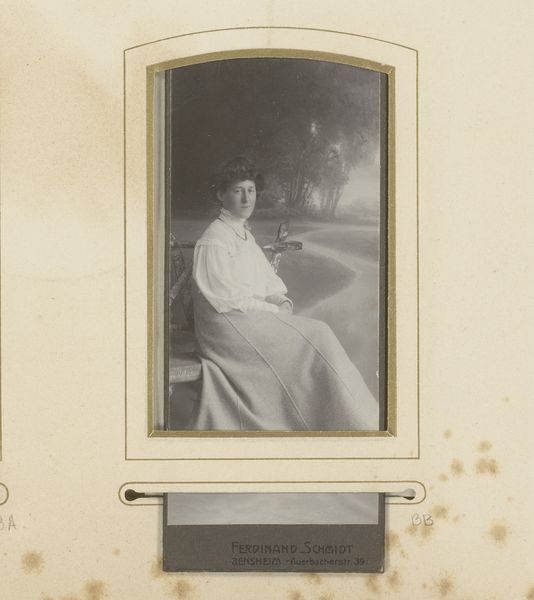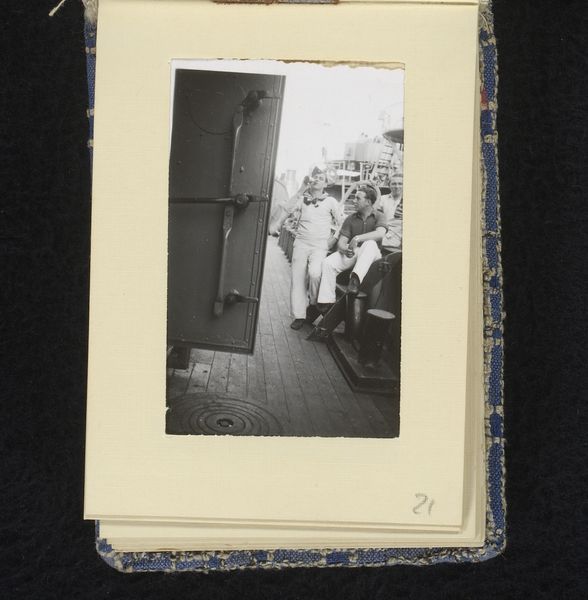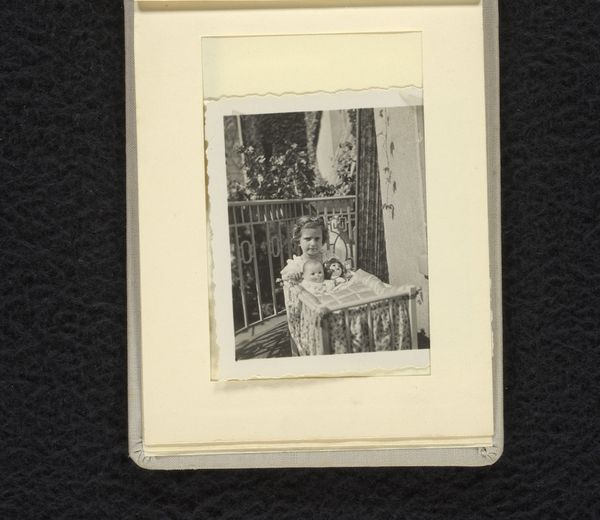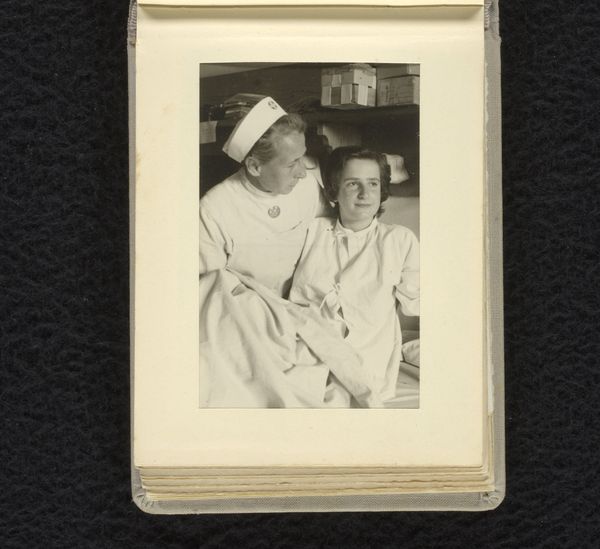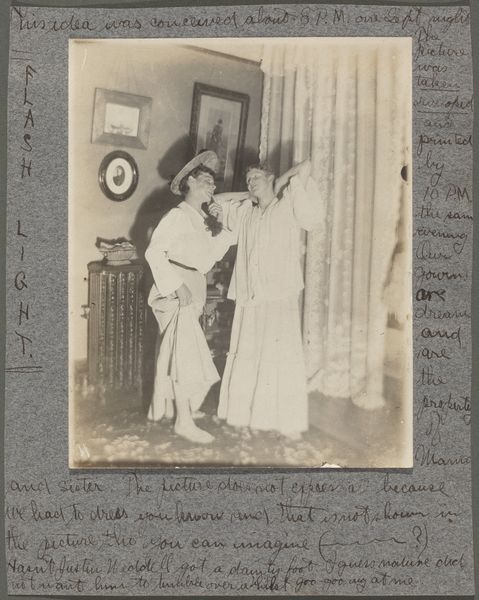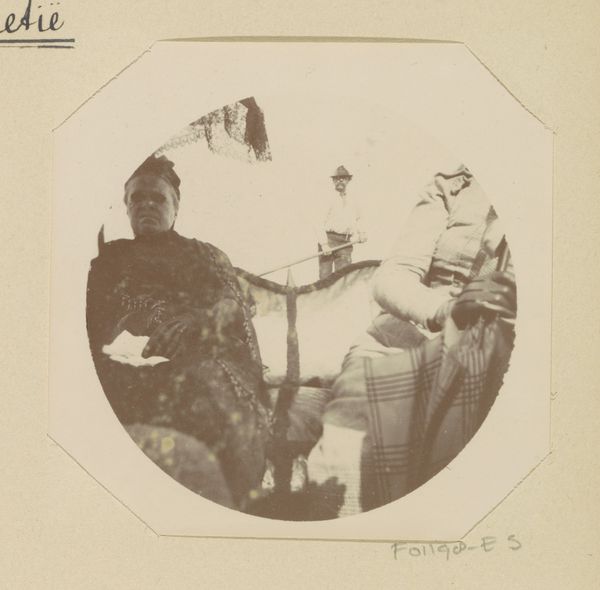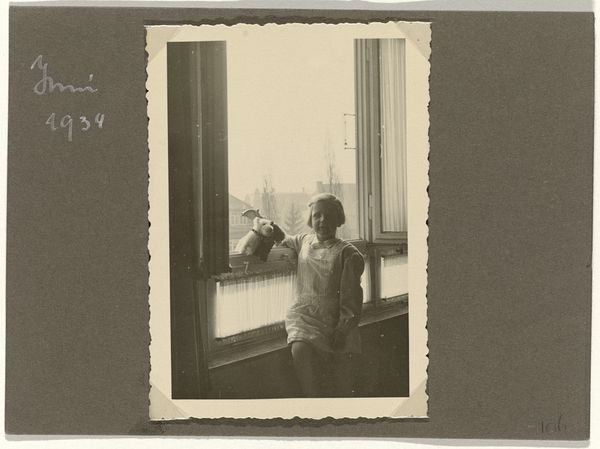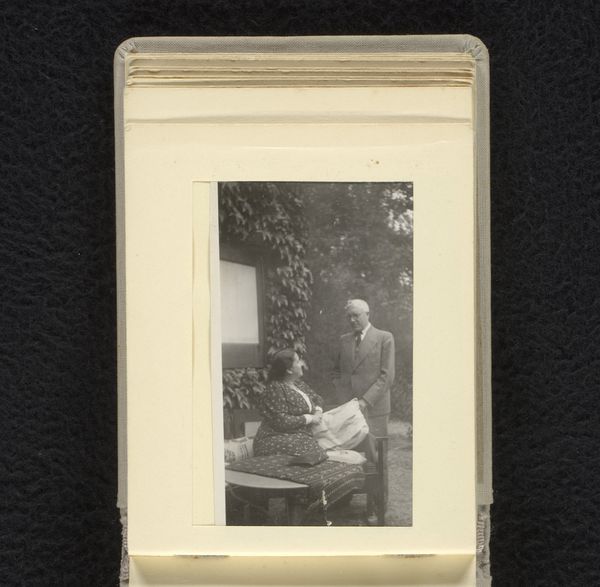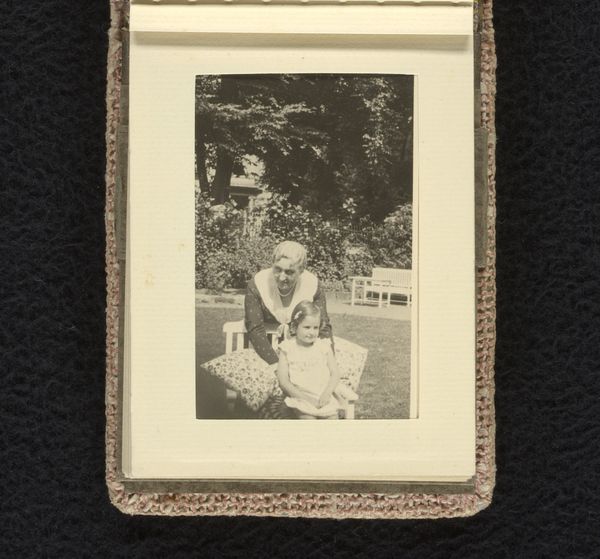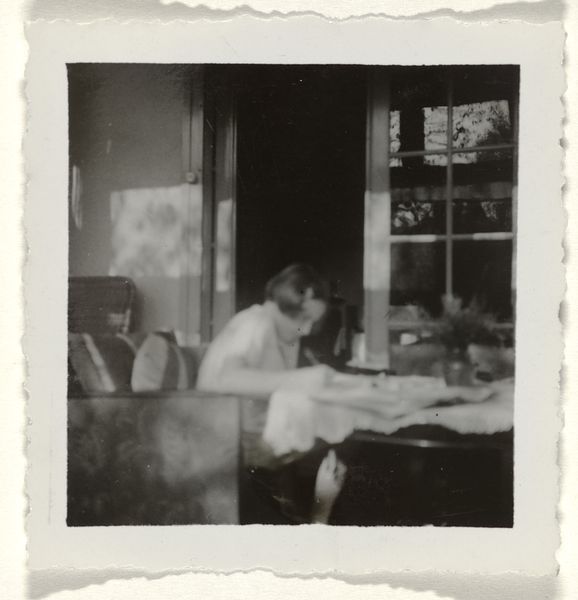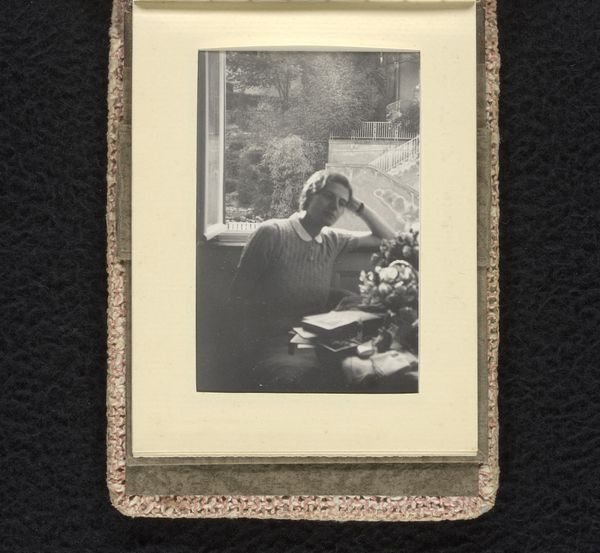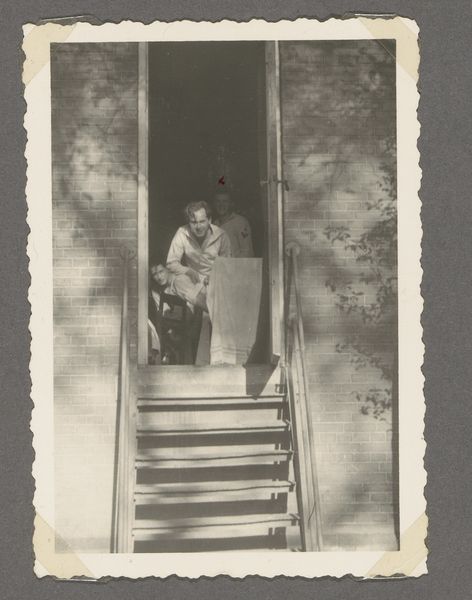
Dimensions: height 88 mm, width 63 mm
Copyright: Rijks Museum: Open Domain
Editor: So, this gelatin-silver print is titled "Ada Krüseman met Edward Colin Burch als baby," created in 1934. It has this delicate, intimate feel – like a captured moment. What strikes you most about this piece? Curator: What I find compelling is the photographic act itself as a form of preservation and control within a specific historical context. In 1934, who was afforded the luxury of documenting their familial life in this way, and what narratives were consciously – or unconsciously – being constructed through such images? Editor: That's a good point. I hadn't thought about the power dynamic inherent in taking and possessing the photo. The family presents itself to the world as this image reflects it, but there's still some degree of reality behind the picture. Is there an idealogical component to this image, in your opinion? Curator: Absolutely. Consider the setting: it’s an outdoor porch and looks rather opulent, further telling us this a scene from Dutch colonial life in Indonesia, then the Dutch East Indies. The woman in the image wears an all-white dress and is surrounded by what is seemingly well-maintained garden - suggesting cleanliness, purity, and control over both nature and perhaps people, even as she performs the ostensibly tender act of motherhood. The question then becomes, how does this idyllic image support or challenge the prevailing narratives of colonialism and power? Editor: It’s a fascinating lens through which to view this seemingly simple family photo. Thanks for that different reading! Curator: And thank you. Thinking about it with you helps solidify my perspective!
Comments
No comments
Be the first to comment and join the conversation on the ultimate creative platform.
